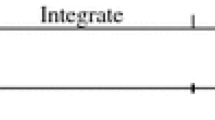Abstract
Outsourcing of non-core activities is nowadays a common business strategy. Declining transaction and transportation costs caused by the advent of Information and Communication Technology are a potentially important driving force behind this development. This paper provides a theoretical framework for analysing a firm's incentive to follow such a strategy of outsourcing and its consequences for macroeconomic variables like growth and product variety. We divide production activities into core and non-core activities. Non-core activities can be performed within the firm or can be mediated by the market. We derive conditions under which outsourcing occurs, and under which outsourcing is socially desirable. These conditions do not necessarily coincide. Outsourcing may hence be a profitable strategy for firms, while it is socially suboptimal. Crucial parameters in the model are the relative scale of core versus non-core activities, management costs, transaction costs and love for variety of consumers.
Similar content being viewed by others
REFERENCES
Abraham, K.G. (1990), ‘Restructuring the Employment Relationship: The Growth of Market Mediated Work Arrangements,’ in: K.G. Abraham and R.B. McKersie (eds.), New Developments in the Labor Market, MIT Press, Cambridge, MA.
Abraham, K.G. and S.K. Taylor (1993), ‘Firms' Use of Outside Contractors: Theory and Evidence,’ NBER Working Paper, No. 4468, Cambridge, MA.
Audretsch, D.B. (1995), ‘The Innovation, Unemployment and Competitiveness Challenge in Germany,’ CEPR Discussion Paper, No. 1152, London.
Benassy, J.P. (1996), ‘Taste for Variety and Optimum Production Patterns in Monopolistic Competition,’ Economics Letters, 52, pp. 41–47.
Bhagwati, J.N. (1984), ‘Splintering and Disembodiment of Services and Developing Nations,’ World Economy, 7, pp. 133–143.
Broer, D.P. and B.J. Heijdra (1996), ‘The Intergenerational Distribution Effects of the Investment Tax Credit under Monopolistic Competition,’ OCFEB Research Memorandum, No. 9603, Rotterdam.
Dixit, A.K. and J.E. Stiglitz (1977), ‘Monopolistic Competition and Optimum Product Diversity,’ American Economic Review, 67, pp. 297–308.
Dluhosch, B. (1997), ‘Trade Liberalization, Technological Change, and the Economics of Outsourcing,’ University of Cologne, mimeo.
Eliasson, G. (1992), ‘Business Competence, Organisational Learning and Economic Growth,’ in: F. Scherer and M. Perlman (eds.), Entrepreneurship, Innovation and Economic Growth, University of Michigan Press, Ann Arbor.
Feenstra, R.C. and G.H. Hanson (1995), ‘Foreign Investment, Outsourcing and Relative Wages,’ NBER Working Paper, No. 5121, Cambridge, MA.
Fixler, D.J. and D. Siegel (1999), ‘Outsourcing and Productivity Growth in Services,’ Structural Change and Economic Dynamics, 10, pp. 177–194.
Francois, J.F. and K.A. Reinert (1995), ‘The Role of Services in the Structure of Production and Trade: Stylized Facts from a Cross-Country Analysis,’ CEPR Discussion Paper, No. 1228, London.
Freeman, C. and L. Soete (1994), Work for All or Mass Unemployment? Computerised Technical Change into the Twenty-First Century, Pinter Publishers, London.
Gordon, D.M. (1996), Fat and Mean, Free Press, New York.
Groot, H.L.F. de (1998), Economic Growth, Sectoral Structure and Unemployment, CentER Dissertation Series, No. 43, Tilburg.
Groot, H.L.F. de and R. Nahuis (1997), ‘Optimal Product Variety, Scale Effects and Growth,’ CentER Discussion Paper, No. 9754, Tilburg.
Kelley, M. (1997), ‘The Dynamics of Smithian Growth,’ Quarterly Journal of Economics, 112, pp. 939–964.
Lovio, R. (1994), ‘Evolution of Firm Communities in New Industries: The Case of the Finnish Electronics Industry,’ Helsinki School of Economics, Helsinki.
Pavitt, K. (1986), ‘Chips and Trajectories: How Does the Semi-Conductor Influence the Direction of Technical Change?,’ in: R. Macleod (ed.), Technology and the Human Prospect, Pinter Publishers, London.
Postner, H.H. (1990), ‘The Contracting-out Problem in Service Sector Analysis: Choice of Statistical Unit,’ Review of Income and Wealth, 36, pp. 177–186.
Raa, T. ten and E.N. Wolff (2000), ‘Outsourcing of Services and the Productivity Recovery in US Manufacturing in the 1980s and 1990s,’ CentER Discussion Paper, 2000-32, Tilburg.
Simonetti, R. (1993), ‘The Long-Run Performance of Large Firms: A Study of Changes in the ‘Fortune’ List 1964-1988,’ University of Sussex, SPRU, mimeo.
Smulders, S. and Th.C.M.J. van de Klundert (1995), ‘Imperfect Competition, Concentration and Growth with Firm Specific Knowledge,’ European Economic Review, 39, pp. 139–160.
Williamson, O.E. (1985), The Economic Institutions of Capitalism, Free Press, New York.
Williamson, O.E. (1998), ‘Transaction Cost Economics: How it Works; Where it is Headed,’ De Economist, 146, pp. 23–58.
Rights and permissions
About this article
Cite this article
De Groot, H.L. Macroeconomic Consequences of Outsourcing: An Analysis of Growth, Welfare, and Product Variety. De Economist 149, 33–51 (2001). https://doi.org/10.1023/A:1004155614797
Issue Date:
DOI: https://doi.org/10.1023/A:1004155614797




